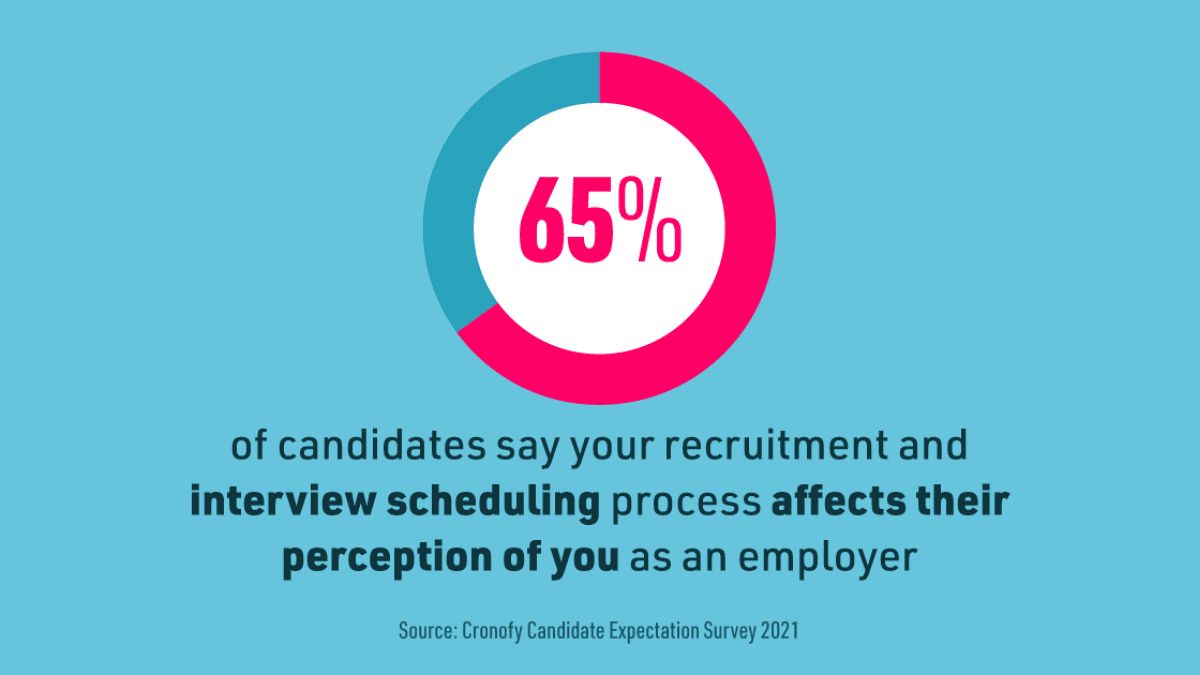The integration of advanced AI scheduling solutions is transforming the landscape of client appointments and management. These innovative tools are not only revolutionizing the way appointments are scheduled but also enhancing the overall experience for both service providers and their clients. By leveraging AI-driven technologies, businesses can optimize their scheduling processes, minimize administrative burdens, and improve profitability. This article will delve into the various aspects of AI scheduling solutions, from the automation of appointment setting to navigating the pros and cons of such tools, and look ahead to the future of virtual assistance powered by artificial intelligence.
Key Takeaways
- AI scheduling solutions enable self-service appointment setting, reducing administrative workload and improving client autonomy.
- Integrating AI with existing calendar systems can automate email coordination and enhance meeting planning efficiency.
- While AI scheduling tools offer ease of use and customization, they may encounter limitations in handling complex scenarios.
- Emerging AI tools for virtual assistants in 2024 are poised to further streamline client management and project workflows.
- Adopting AI in practice management can lead to increased profitability by minimizing operational costs and recapturing revenue.
Revolutionizing Client Management with AI

Enabling Patient Self-Scheduling
The advent of AI in healthcare has brought about a transformative change in how patients interact with medical services. Self-scheduling is a prime example of this evolution, offering a convenient way for patients to book their appointments online at any time. This autonomy not only enhances patient satisfaction but also alleviates the administrative burden on healthcare staff, leading to reduced costs.
Advanced AI scheduling solutions provide a seamless interface for patients to choose their preferred times, locations, and providers. The sophistication of these systems ensures that appointments are made within operational parameters, avoiding scheduling conflicts or inappropriate timing for complex procedures.
To maximize the effectiveness of self-scheduling, it's crucial to integrate multiple sources into the scheduling system:
- Walk-in appointments
- Electronic health record (EHR) orders
- Physician portals
- Robocalls
- Online chat
- Mobile messaging
By embracing a multi-source approach, healthcare practices can significantly increase the number of completed appointments and minimize patient no-shows. The key is to implement an intelligent system capable of managing the diverse needs of patients and the practice alike.
Reducing No-Shows and Late Arrivals
The impact of no-shows and late arrivals extends beyond mere inconvenience; it represents a significant operational and financial burden. Advanced AI scheduling solutions are pivotal in mitigating these issues, ensuring that appointment slots are maximized and revenue is recaptured. By leveraging intelligent waitlist management, practices can dynamically fill cancellations, often with patients who are pre-authorized and prioritized for availability.
Automated reminders and confirmations play a crucial role in reducing no-shows. They keep patients informed and accountable, significantly decreasing the likelihood of missed appointments.
Here are some strategies AI tools employ to reduce no-shows:
- Automated appointment reminders via SMS, email, or voice calls.
- Real-time waitlist management to quickly fill vacant slots.
- Predictive analytics to identify patients at high risk of no-shows.
Patient no-shows not only lead to lost revenue and wasted resources but also reduce patient satisfaction. With AI scheduling, practices can empower patients to self-schedule and reschedule, minimizing costs while maximizing appointment volume and enhancing the overall patient experience.
Enhancing Patient Experience with Streamlined Workflows
In the realm of healthcare, patient experience is paramount. Streamlined workflows not only improve operational efficiency but also significantly enhance the patient journey from initial contact to follow-up care. By integrating advanced AI scheduling solutions, healthcare providers can offer a more personalized and seamless experience.
The implementation of innovative workflows, such as pre-registration and patient engagement, allows for a smoother process, reducing the time patients spend on administrative tasks and increasing their satisfaction.
Here's how AI can transform key aspects of the patient journey:
- Referring Engagement Workflow: Enhances collaboration with referring physicians.
- Pre-Registration Workflow: Increases efficiency and accuracy in patient registration.
- Scheduling Workflow: Streamlines patient scheduling and better manages appointments.
- Patient Engagement Workflow: Improves patient satisfaction and engagement.
These improvements in workflow lead to a more connected and informed patient experience. With mobile-optimized solutions, patients gain the ability to manage their appointments and access information with ease, contributing to a more empowered patient base.
Optimizing Scheduling with Intelligent Assistants

Automating Email Coordination for Efficient Meeting Planning
In the age of digital communication, the back-and-forth of email coordination can be a significant time sink. AI scheduling tools like x.ai revolutionize this process by automating the scheduling of meetings directly from your inbox. With such tools, the need for manual intervention is greatly reduced, streamlining the entire meeting planning process.
- Dialogue and flow management
- Integration with external data sources
- Multi-channel deployment
- Analytics and reporting
These features ensure that your AI assistant not only schedules meetings but also adapts to the dynamic nature of your workflow. > By leveraging AI to handle email coordination, professionals can focus on more strategic tasks, leaving the mundane logistics to intelligent algorithms.
While the benefits are clear, it's important to recognize that these tools may have limitations in handling complex scheduling scenarios. However, for most standard meeting arrangements, AI-driven email coordination is a game-changer, offering ease of use and integration with popular calendar systems.
Integrating AI with Existing Calendar Systems
The integration of AI with existing calendar systems is a game-changer for professionals and businesses alike. AI scheduling tools seamlessly synchronize with popular calendar platforms, ensuring that appointments are automatically updated in real-time. This eliminates the need for manual entry, reducing the risk of double bookings and scheduling conflicts.
- AI scheduling assistants can handle the back-and-forth of email coordination, finding suitable meeting times without human intervention.
- They can understand natural language requests in emails, making the process intuitive and user-friendly.
- These tools often come with analytics features, providing insights into scheduling patterns and helping to optimize future appointments.
The beauty of AI scheduling lies in its ability to adapt to the user's preferences and time zones, making it an indispensable tool for global teams.
However, it's important to note that while AI can significantly streamline scheduling tasks, it may sometimes be less flexible in complex scenarios that require human judgment. For instance, when dealing with high-profile clients or sensitive meetings, a personal touch might still be necessary. The key is to find the right balance between automation and human oversight to ensure the best outcomes for all parties involved.
Leveraging Analytics for Improved Scheduling Decisions
The integration of analytics into scheduling systems has transformed the way appointments are managed. Data-driven insights enable practices to optimize their equipment utilization, reducing inefficiencies and maximizing opportunities. By analyzing patterns in appointment bookings and cancellations, AI scheduling tools can predict peak times and adjust resource allocation accordingly.
Analytics also play a crucial role in identifying trends that lead to better patient distribution throughout the day, ensuring a smoother workflow and a more balanced workload for staff.
Here's how analytics can improve scheduling decisions:
- Predictive Analysis: Forecasting demand to prepare for busy periods and reduce downtime.
- Resource Optimization: Aligning staff and equipment availability with patient appointments.
- Pattern Recognition: Identifying common cancellation times to offer targeted waitlist opportunities.
By leveraging these analytics, practices can make informed decisions that enhance both profitability and patient satisfaction.
Navigating the Pros and Cons of AI Scheduling Tools

Assessing the Ease of Use and Customization Options
When considering AI scheduling tools, the ease of use and customization options are pivotal for seamless integration into existing workflows. Users often prioritize a simple interface and easy navigation, which can significantly reduce the learning curve and encourage regular use. Customization is equally important, as it allows the tool to adapt to the specific needs of a practice or individual.
Customization can range from basic appearance settings to complex workflow integrations. For instance, some AI assistants offer modular designs, enabling users to tailor the experience to their preferences. However, it's crucial to note that while many tools boast extensive customization, they may require a deeper understanding of the system to fully exploit these features.
The best AI meeting scheduler should not only accommodate your current needs but also have the flexibility to evolve with your practice.
Here's a quick comparison of two AI scheduling tools based on user feedback:
While tools like Databot are praised for their simple interface and availability of modules, they may fall short in resources, which could be a limitation for some users. On the other hand, platforms like Zapier, known for their vast integrations and complex automations, might require a bit more effort to set up but offer significant time-saving benefits in the long run.
Understanding Flexibility Limitations in Complex Scenarios
While AI scheduling tools offer remarkable efficiency in managing appointments, they are not without their limitations, especially in complex scenarios. Complex scheduling scenarios, such as coordinating meetings across different time zones, can reveal the inflexibility of some AI systems. These tools may struggle with the nuances of human preferences and the unpredictability of certain events.
AI scheduling shines when it comes to managing routine appointments, but its rigidity can become apparent when faced with atypical or multifaceted requirements.
For instance, in healthcare settings like diagnostic imaging centers, the need to balance equipment utilization with patient appointments is critical. A poorly optimized AI scheduler might lead to excessive equipment downtime or, conversely, overbooking, resulting in inefficiencies and patient dissatisfaction. Here are some common challenges:
- Inability to self-schedule for complex exam types
- Difficulty in optimizing equipment utilization
- Challenges in scheduling from multiple sources
To address these issues, it's essential to choose AI scheduling solutions that offer a high degree of customization and can integrate seamlessly with existing systems to handle the intricacies of such demanding environments.
Evaluating Time-Tracking and Workflow Automation Features
In the realm of AI scheduling tools, time-tracking and workflow automation are pivotal for enhancing productivity and ensuring accountability. These features allow virtual assistants (VAs) and client management professionals to monitor time spent on tasks and automate repetitive activities, leading to a more efficient use of time and resources.
- TimeHero: Automates scheduling and work management with AI, boasting features like automatic time tracking and reporting.
When evaluating these tools, it's crucial to consider both their capabilities and limitations. A tool that excels in time-tracking might fall short in workflow automation, or vice versa. The key is to find a balance that suits the specific needs of your practice.
For instance, Zapier, a tool known for its vast integrations, enables the creation of custom "zaps" to handle repetitive tasks, saving significant time for tech-savvy users. However, it requires some setup knowledge, and its free tier is limited. On the other hand, platforms like x.ai are designed with virtual assistants in mind, offering a wide range of features and excellent time-tracking but may have a slight learning curve.
The Future of Virtual Assistance: AI-Driven Efficiency

Curating Top AI Tools for Virtual Assistants in 2024
As we step into 2024, the landscape of AI tools for virtual assistants is more vibrant and diverse than ever. Selecting the right AI tool is crucial for enhancing efficiency and staying ahead in the competitive market. Below is a list of top AI tools that have been recognized for their exceptional capabilities in various domains:
- Google Assistant: Best for Android integration and voice commands
- Siri: Ideal for Apple ecosystem users with seamless device syncing
- Microsoft Cortana: Strong enterprise features for Windows users
- Amazon Alexa: Extensive smart home and office automation
- IBM Watson Assistant: Advanced analytics and natural language processing
- X.ai: Sophisticated scheduling and calendar management
- Braina: Powerful voice recognition and task automation
- Databot: Interactive AI companion with conversational abilities
- Youper: Emotional health assistant with AI therapy sessions
The right AI tool not only simplifies tasks but also opens up new avenues for virtual assistants to deliver exceptional service. It's about finding a balance between functionality, ease of use, and integration with existing workflows.
As the demand for virtual assistance grows, these tools are continuously refined to meet the evolving needs of professionals. They offer a blend of task automation, client management, and personalized assistance, ensuring that virtual assistants can provide the highest level of service to their clients.
Exploring Comprehensive Solutions for Client and Project Management
In the realm of virtual assistance, the adoption of AI project management software is a game-changer. These tools are not just about automating routine tasks; they're pivotal in managing and organizing projects and teams. For virtual assistants (VAs), this means a significant enhancement in managing multiple clients and projects efficiently.
The right AI solution can transform the virtual assistant's role, offering a comprehensive suite of tools that cater to the unique demands of client and project management.
When selecting an AI tool, it's crucial to consider the specific needs of your practice. For instance, a platform that streamlines scheduling, workflow automation, and client management, while being highly customizable and offering excellent time-tracking, could be ideal for VAs. However, one must be aware of the potential learning curve and the necessity for regular use to reap the best benefits.
Here's a quick comparison of two popular solutions:
Ultimately, the goal is to minimize operational costs and recapture revenue by leveraging intelligent systems that can handle the complexities of modern client and project management.
Advancing VA Productivity with AI-Powered Research Capabilities
The integration of AI-powered research tools is a game-changer for virtual assistants (VAs), enabling them to perform tasks with unprecedented speed and accuracy. These tools are not just about assisting; they are transforming VAs into powerhouses of efficiency and innovation.
- Effortless scheduling
- Crystal-clear transcription
- Lightning-fast research
By leveraging AI, VAs can now handle complex research tasks that would have previously taken hours in a fraction of the time. This shift not only saves time but also allows for a deeper level of analysis and insight, which can be critical in decision-making processes.
The curated list of AI tools for VAs in 2024 reflects a commitment to providing the best solutions for productivity enhancement. From scheduling to transcription, each tool is selected to ensure that VAs can maximize their output and focus on delivering exceptional service to their clients.
Implementing AI Solutions for Enhanced Practice Profitability

Streamlining Patient Intake and Scheduling Processes
The integration of AI into patient intake and scheduling processes marks a significant leap forward in healthcare efficiency. AI algorithms are now capable of tailoring scheduling to a patient's unique needs, considering factors such as preferences and availability. This level of personalization ensures a smoother patient journey from the outset.
Digitizing pre-registration workflows is another transformative step. By allowing patients to complete necessary paperwork online or via mobile devices, healthcare providers can significantly reduce arrival bottlenecks. This shift not only enhances patient convenience but also streamlines administrative tasks:
- Pre-registration forms are filled out in advance
- Manual check-in procedures are minimized
- Wait times are reduced
By automating the pre-registration process, practices can attach completed paperwork directly to a patient's record, along with essential documents like insurance cards and IDs, thereby eliminating a substantial portion of intake challenges.
Empowering patients through self-scheduling and patient engagement solutions is also crucial. Providing options for appointment confirmation via text messages, patient portals, and online chats can lead to a more efficient and patient-centric approach.
Recapturing Revenue with Intelligent Waitlist Management
Intelligent waitlist management is a game-changer for practices looking to recapture lost revenue due to patient no-shows. By prioritizing patients based on availability and authorization, an automated waitlist can swiftly fill cancellations, ensuring maximum appointment utilization. This not only optimizes staff time but also enhances patient satisfaction by offering earlier appointment opportunities.
An effective waitlist system seamlessly integrates with your scheduling process, maintaining a balance between pre-booked appointments and potential last-minute slots. It's a strategic approach to minimize downtime and maximize revenue.
Here are some benefits of implementing intelligent waitlist management:
- Reduces patient no-shows by filling slots quickly
- Empowers patients with more scheduling control
- Recaptures revenue by minimizing empty appointment times
- Streamlines staff workflows, reducing administrative burden
By embracing this technology, practices can see a significant improvement in operational efficiency and patient care delivery.
Minimizing Operational Costs with Automated Systems
Automated systems are transforming the landscape of operational efficiency, particularly in the realm of workforce management. By automating employee scheduling, significant reductions in labor costs are achieved, as systems like Workday Scheduling utilize AI to track and adjust schedules seamlessly. This not only minimizes the need for manual intervention but also ensures optimal equipment utilization, addressing the common issue of balancing over and under-utilization.
The integration of AI scheduling tools into operational workflows can lead to a substantial decrease in wasted resources, excessive equipment downtime, and missed opportunities.
Furthermore, the elimination of manual processes, such as frequent scheduling conflicts and costly human errors, frees up staff to focus on more meaningful tasks. This shift from paperwork to patient care enhances both patient and physician experiences, potentially reducing staff turnover and streamlining employee onboarding times.
- Automated Waitlist Management: Ensures full utilization of staff and locations.
- Digital Pre-Registration Workflows: Speeds up patient intake and reduces paperwork.
- Workflow Automation: Redirects resources from manual processes to meaningful tasks.
Conclusion
In conclusion, advanced AI scheduling solutions are transforming the way client appointments are managed, offering unprecedented efficiency and convenience. By automating the scheduling process, these intelligent systems reduce the manual effort involved in finding mutually convenient meeting times, handling email correspondence, and integrating with existing calendar platforms. While there may be some limitations in more complex scenarios, the benefits far outweigh the cons, particularly for virtual assistants and practices looking to streamline their operations. As we've explored throughout this article, the right AI tool can not only save time but also enhance client satisfaction and improve overall workflow. Embracing these cutting-edge technologies is no longer a futuristic concept but a practical step towards optimizing productivity and reclaiming valuable time in our increasingly busy lives.
Frequently Asked Questions
How does AI scheduling improve client appointment management?
AI scheduling solutions enhance client appointment management by automating the coordination of meetings, allowing self-scheduling for clients, reducing no-shows through reminders and alerts, and integrating with existing calendar systems to streamline workflows.
What are the benefits of using x.ai for scheduling?
Benefits of using x.ai include reducing the back-and-forth emails when scheduling meetings, integrating with external data sources, handling conflicts, and providing analytics and reporting. It's especially useful for virtual assistants and clients who need to find mutually convenient meeting times.
What are the limitations of AI scheduling tools?
While AI scheduling tools offer many advantages, they can be less flexible in complex scheduling scenarios and may have a learning curve for users. However, the benefits typically outweigh the limitations, especially for regular users.
What features should I look for in an AI scheduling tool for virtual assistants?
Look for features such as dialogue and flow management, integration with external data sources, multi-channel deployment, and robust analytics and reporting. These features can significantly enhance a virtual assistant's productivity and client management capabilities.
Can AI scheduling tools help reduce operational costs for my practice?
Yes, AI scheduling tools can help minimize operational costs by automating systems, reducing manual scheduling efforts, minimizing no-shows with intelligent waitlist management, and streamlining patient intake processes.
What should I consider when choosing an AI tool for virtual assistants?
When choosing an AI tool for virtual assistants, consider the range of features offered, ease of use, customization options, integration with your existing workflow, and the potential to streamline tasks like scheduling, client management, and research.



